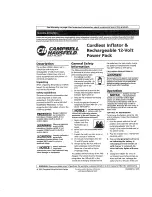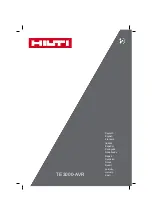
7
Parts & Service: 020 8988 7400 / E-mail: [email protected] or [email protected]
Insert the rivet into the workpiece to be secured, pressing firmly depress the
trigger. The riveter will ‘fire’, breaking off the mandril, allowing the riveter to be
removed from the workpiece and re-loaded. Spent mandrills will be ejected
from the rear of the riveter.
To change the nosepiece, unscrew and remove the installed nosepiece, a
slight spring resistance will be felt.
Choose the nosepiece to be installed, push firmly against spring resistance into
the head (item 2), screw home and tighten with the wrench supplied.
DISCONNECTING THE AIR SUPPLY
Do not disconnect the air supply hose until the air supply has been shut down
and the compressed air released.
1. Refer to the compressor instruction manual for the procedure to shut down
and release the compressed air.
2. Once the pressure has been released, disconnect the air supply hose from
the air tool.
Store the tool safely in its box in a dry, secure environment.
MAINTENANCE
DAILY
1. Before use, drain water from the compressed air supply.
2. Pour a few drops of CLARKE airline oil, into the air inlet. This should be
carried out regardless of whether or not an in-line mini oiler is used. If an
inline mini oiler is not used, this procedure should be repeated after every
two to three hours of use.
CLEANING
1. Keep the body of the tool clean and free from debris. Grit or gum deposits
in the tool may reduce efficiency.
If the riveting action becomes erratic or the riveter operates but fails to form a
rivet successfully, it is possible that the jaw housing assembly (items 3 - 8)has
worked itself loose, and requires adjusting. Should this occur, proceed as
follows:
WARNING: MAKE SURE THAT THE TOOL IS DISCONNECTED FROM THE AIR
SUPPLY BEFORE STARTING ANY CLEANING, OR MAINTENANCE
PROCEDURES.






























